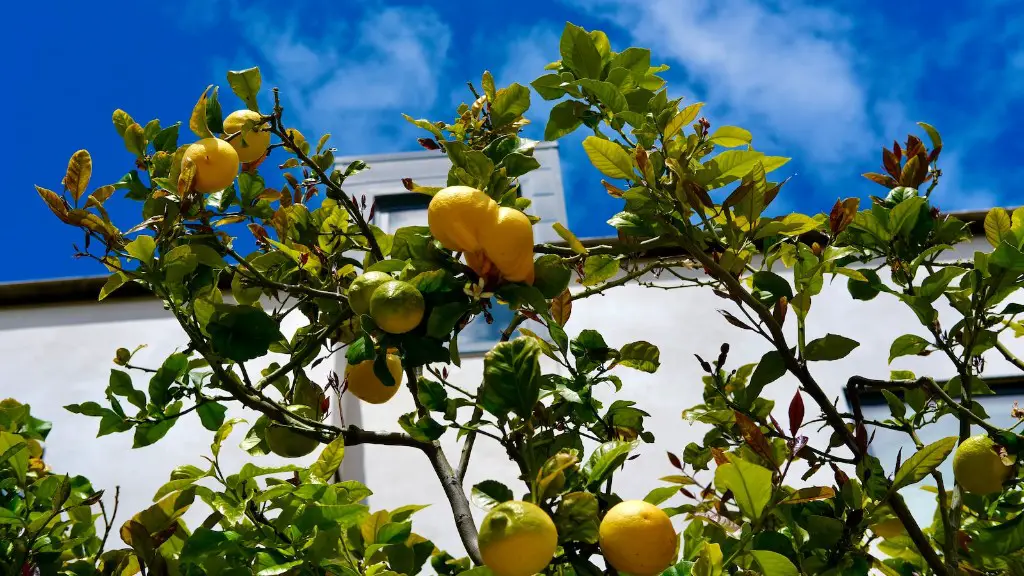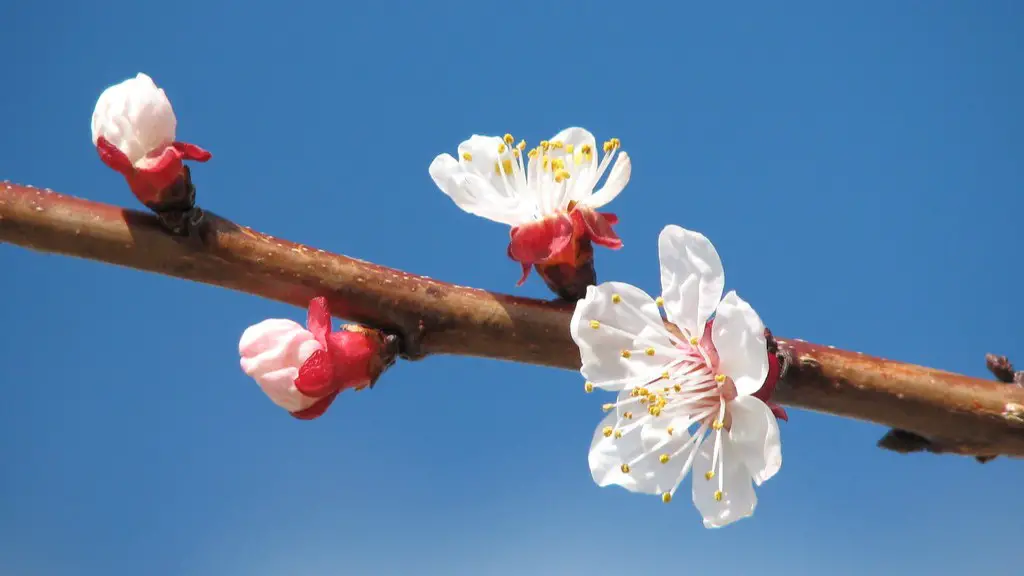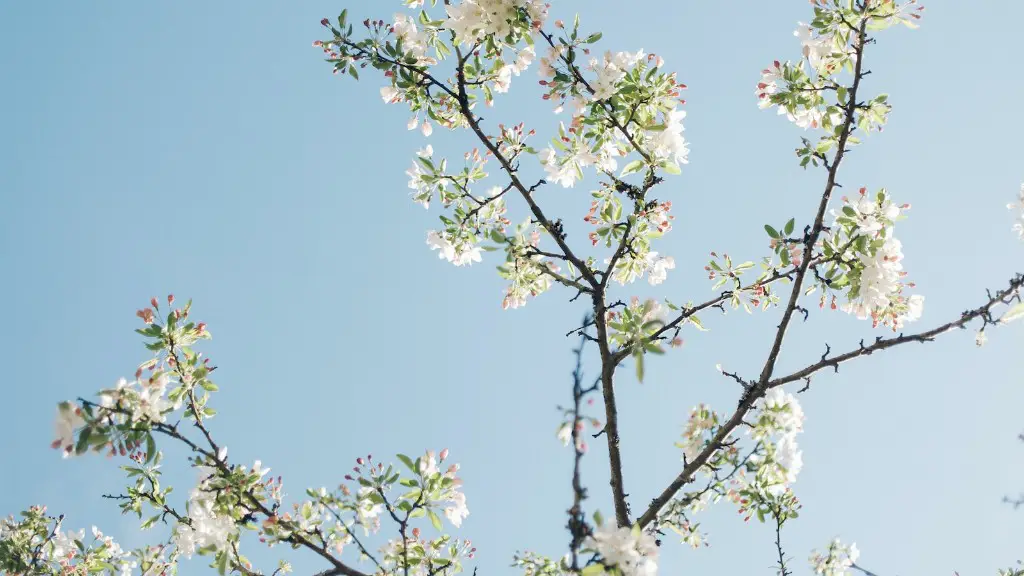Making a lemon tree bonsai is a beautiful and rewarding craft, with the right know-how and a bit of patience. It takes dedication and effort, but the results will be worth it. Here’s how to do it.
First, you’ll need to get some bonsai soil, which is specially designed to provide optimal growth conditions and nutrition. You can buy it online or at a local gardening store.
Next, you’ll need to find a suitable tree. Look for one with a strong, healthy trunk and good branching structure. Avoid trees that have been trimmed or pruned, as this can damage the tree and reduce its potential.
When you’ve selected a tree, you can begin to shape it into a bonsai. This can be done with wire and pruning shears. Make sure to use only the sharpest blades and to use caution and care when working.
When the tree is properly pruned and shaped, it will need to be repotted. Make sure you use a bonsai pot that is slightly larger than the root-ball of the tree. Bonsai trees need to be re-potted every few years to remain healthy.
Finally, you’ll need to give your bonsai lemon tree the proper care and attention it needs to thrive. This means providing the right amount of sunlight, water and fertilizer. Make sure you follow the instructions on the package, as different types of bonsai trees require different amounts of care.
By following this guide, you’ll be well on your way to creating a beautiful, flourishing and unique bonsai lemon tree.
Care and Maintenance of a Bonsai Lemon Tree
In order to keep your bonsai lemon tree healthy and flowering, you must provide adequate care and maintenance, and follow best practices. This includes proper light and temperature, water, and nutrition. Your bonsai will also require pruning.
Light and temperature are important aspects of the care of the bonsai lemon tree, as the plant needs approximately 8-12 hours of full sunlight per day. The ideal temperature range is between 40 and 90 degrees Fahrenheit. If your tree is kept too cold, it may not grow well. Too much heat can also be damaging.
Watering must also be done correctly. Allow the soil to dry out partially between waterings and avoid over-watering. An effective way to do this is to use a moisture meter, this will allow you to tailor the watering to the individual needs of the plant.
Nutrition is also key to maintaining a healthy lemon tree bonsai. Use a balanced fertilizer every two weeks and make sure the fertilizer is specific to your bonsai. This type of fertilizer should contain nitrogen, phosphorus, and potassium, as well as trace elements like iron and magnesium.
Finally, pruning must be done on a regular basis. Properly pruning will ensure the plant remains strong and healthy. The most important things to remember about pruning are to take off only small branches, pay attention to the direction of the branches, and keep the shape of the bonsai in mind.
Training a Bonsai Lemon Tree
Training is the process of shaping a bonsai lemon tree into the desired shape. The best way to do this is to use wire and pliers. Gently wrap the tree in wire to begin training it, paying close attention to the trunk as it’s very important to make sure the trunk is even. Once the trunk is at the desired shape, you can begin to shape the branches.
A crucial factor in training a bonsai lemon tree is patience. A mistake often made by beginners is trying to rush the process. Take your time, and pay attention to the details. Make sure you allow enough time for the wire to hold, as well as for the tree to restore its strength after being manipulated.
Another common mistake is not checking the wiring frequently enough. It’s important to ensure the wire isn’t too tight, as it can cause damage to the tree. Be sure to check the wiring periodically and adjust as needed.
Finally, when wiring a bonsai lemon tree, be sure to use proper technique. After the wire has been put in place, the terminal buds of the branches should be pressed downwards to encourage them to grow in the desired shape. Never just twist the wire around the branches – this can cause irreversible damage to the tree.
Repotting a Bonsai Lemon Tree
A key part of caring for a lemon tree bonsai is repotting. The best time to repot is during late winter or early spring when the tree is in dormancy. This is to ensure that the tree does not drop too many leaves or enter shock from being repotted.
Start by removing the tree from the pot and gently remove the old soil. Be careful not to damage the tree’s roots as this can affect its health. Trim any damaged or dead roots, and lightly prune the branches.
Once the roots and branches have been trimmed, you can begin to repot. Before doing so, make sure to use a new pot, which is 1-2 inches larger than the previous one. When replanting, make sure the tree is positioned correctly and fill the new pot with fresh, specially designed bonsai soil.
Water the newly planted tree to provide hydration and reduce shock. Monitor it closely for the first few weeks, as it is more. During this time, the mixture of soil, fertilizer and water should be carefully adjusted to ensure optimal growth.
Be sure to provide the bonsai lemon tree with the proper aftercare, such as reliable sunlight and adequate water. This will help ensure its health and vigor.
Fertilizing a Bonsai Lemon Tree
Fertilizing your bonsai lemon tree is key in keeping it healthy and getting it to flower. If your fertilizer is not properly balanced, it can cause leaf yellowing and lead to a weakened plant.
A balanced fertilizer should contain nitrogen, phosphorus, and potassium, as well as trace elements such as iron, magnesium, calcium and manganese. These elements will enable the tree to have an adequate nutrient supply to grow and remain healthy.
It’s best to fertilize a bonsai lemon tree once every two weeks. A diluted balance fertilizer should be used and it should be applied to the soil surface, avoiding contact with the foliage. Be sure not to overdo it; too much fertilizer can burn the roots and cause damage to the tree.
Fertilizer can also be applied to the foliage, but this should be done cautiously. It should be applied only to the lower leaves and branches and be sure to wash it off if not absorbed in a few hours.
Finally, remember that fertilizing may not be necessary in the winter months. If the tree is dormant, it may not need as much fertilizer.
Wrapping Up a Bonsai Lemon Tree
Wrapping a bonsai lemon tree is an important part of keeping it healthy. Wrapping will protect the tree from cold temperatures or excessive heat. An effective material to use is burlap or muslin.
Using a large piece of burlap or muslin, securely wrap the tree at the base where the trunk meets the soil. Be sure to wrap the burlap or muslin tightly, so that it does not flap in the wind.
Underneath the burlap or muslin, you should use an additional layer of thick material like straw or pine needles. This will help insulate the tree, keeping it warm and protected.
Afterwards, use a waterproof material such as plastic to seal the wrapping. This will help to keep the wrapping in place and prevent water from entering the burlap or muslin.
Finally, don’t forget to remove the wrapping as soon as the temperature starts to warm up. Keeping the wrapping on for too long can lead to root rot and can cause the tree to become too wet, which will cause the roots to rot.





